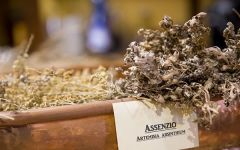Antica Torino Vino Chinato



Product Details
Your Rating
Somm Note
Winemaker Notes
Chinato made with Nebbiolo grapes from the Barbaresco area. Austere and pleasant with amazing notes of cinchona, wormwood, gentian, elder flower, rhubarb, bay leaves, chamomile, cinnamon, vanilla, coriander, rose and nutmeg.
The perfect after dinner digestif, served with chocolate.






Antica Torino is the brainchild and longtime passion project of Liguria-based wine & spirits huntsman, Vittorio Zoppi, and Umbrian winemaker Filippo Antonelli. Vito’s love for Italian spirits began as it does for many in Italy—as a child surrounded by the time-honored traditions and legacies of regional drinking culture. By sampling and studying a wide variety of vermouth and digestivi from around the world, Antica Torino has endeavored to create refined recipes inspired by the traditions of Torino and enlivened by the Piedmontese spirit. After formulating their flagship Rosso Vermouth, the team turned their attention to (re)creating an increasing collection of heritage spirits, using ingredients from both Piedmont and around the world, coupled with painstaking research and an abiding love for the drinking traditions of Italy.
